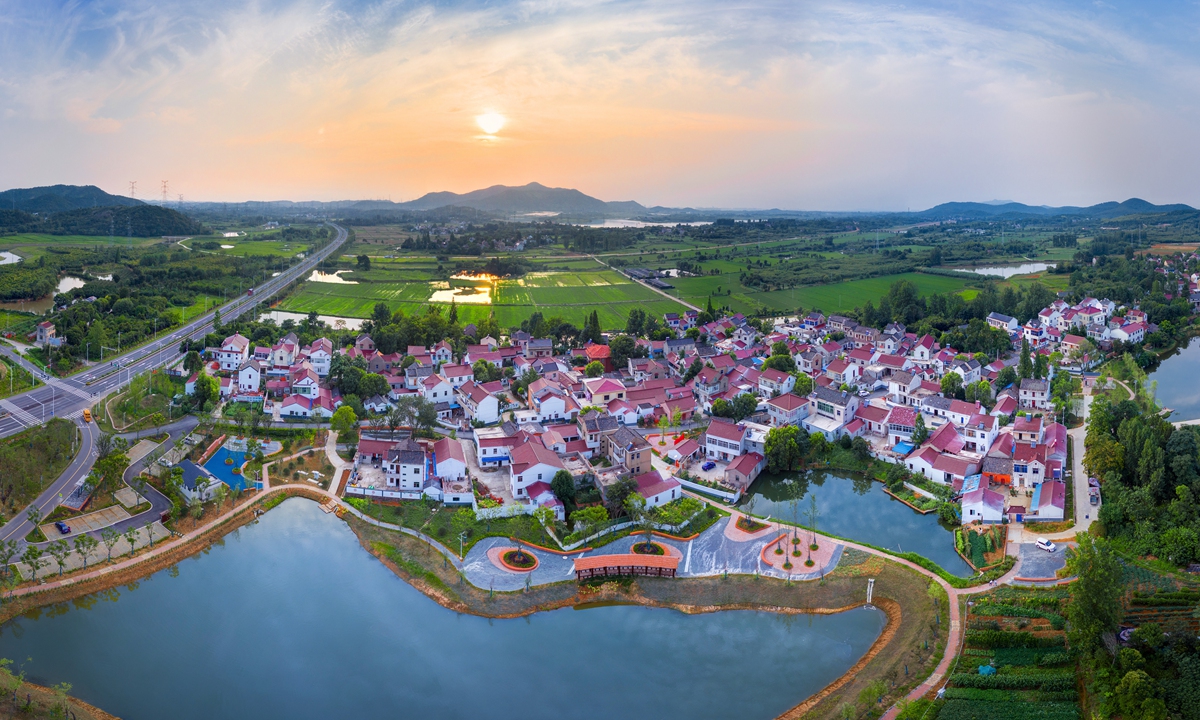IN-DEPTH / IN-DEPTH
Narrowed urban-rural gap prompts return of educated and skilled youth to China’s countryside: expert

Photo: VCG
Having secured a victory in eradicating absolute poverty, China has now ramped up its efforts to propel rural revitalization, a major task in realizing the rejuvenation of the Chinese nation, also a major key move for the development of a modernized economy.
Policy statements released by the central government have increasingly highlighted the role of science and technology. Talents, especially the youth with innovative tools and ideas, are increasingly becoming key contributors, Yu Shaoxiang, chief research fellow with the National Institute of Social Development at the Chinese Academy of Social Sciences, told the Global Times.
As an important national strategy, the rural revitalization mission comes with favorable policies and investment, and presents the youth with more chances and greater options to face current employment pressures. The government has also been streamlining paths for the return of the youth to their hometowns to start businesses, said Yu.
Attracting young people back to the countryside also benefits from China's accelerating urban-rural integration. "In outdated beliefs, living in the countryside meant a perceived inferiority. China has been striving to narrow the gap between rural and urban areas through industrialization and modernization. The improvement in rural living conditions has encouraged more youth to return home," he said.
Rural youth can provide ideas, inspiration, and energy to imagine, create, and grasp opportunities for stronger, more connected, resilient, and prosperous rural areas, and they have an innovative mindset when it comes to invigorating rural areas, according to Yu. "It can even be said that young people are the hope of rural modernization."
The key problem now is to create conditions which enable young people to fulfill their potential in rural areas and ensure equality for young people in rural and urban settings, observers suggested. Such facilities to close the existent gap would be appropriate infrastructure, sustainable jobs, and high-quality education opportunities available to young people in rural areas, and promoting the youth's active participation in decision-making processes.
"At present, China's urban and rural development is still uneven. But it is believed that more powerful policies and enhanced investment in the future will lead returnees to a brighter future and a decent life in rural China amid the country's determination to realize true socialist modernization," said Yu.
With China's success in poverty alleviation and the deepening of agricultural and rural reform, the income of rural residents has grown significantly faster than that of urban residents, further narrowing the gap between the two.
From 2011 to 2020, the per capita disposable income of rural residents grew at an average annual rate of 10.6 percent, 1.8 percent faster than that of urban residents. The per capita disposable income ratio of urban and rural residents has decreased year-on-year, from 2.99 in 2010 to 2.56 in 2020, media reported.

